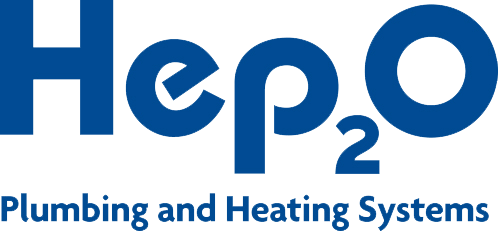
Website SEO Optimisation, Team Reviewing Analytics
What does website SEO optimisation mean in 2025
SEO improves a website’s visibility in search engine results by aligning pages with user intent and search engine guidelines. It spans technical health, on-page relevance, authority signals, and user experience. The goal is simple: better search rankings, more search traffic, and stronger lead flow.
Core tasks include solid information architecture, fast web pages on mobile devices, meaningful internal links, and schema markup where it helps. You also need accurate title tag copy, a good meta description on each important page, and helpful, relevant content people actually read and share.
Why it matters for UK businesses
- Qualified demand: organic search captures people already comparing suppliers and services.
- Lower cost over time: search traffic keeps coming without daily ad spend.
- Brand awareness: repeated visibility for target keywords builds trust and market share.
We measure outcomes in Google Analytics and Google Search Console, and we log improvements by particular page, query, and device. Clear scorecards keep your team focused on practical next steps.
The four pillars: technical, on-page, authority, UX
1) Technical SEO
- Crawl & index: use tools to check robots.txt, noindex rules, and the XML sitemap for a site. Validate with Search Console and Bing Webmaster Tools.
- Speed: compress images, remove unused scripts, and prioritise the content that loads first on mobile devices.
- Structure: avoid duplicate paths; set a canonical URL where needed; keep internal redirects short.
- Structured data: add schema markup to articles, FAQs, products, and events where it clarifies important information.
- Security: HTTPS everywhere, clean redirect rules, and stable domain name settings.
2) On-page optimisation
- Keyword research: Use Google Keyword Planner and keyword research tools to map relevant keywords to the right page.
- Headings and copy: write quality content that answers questions, uses plain English, and avoids fluff.
- Metadata: unique title tag and meta description per page to earn clicks from search engine results.
- Images: descriptive filenames and alt tags; keep files light.
- Internal links: pass context and authority to service pages using descriptive anchors.
3) Authority building
- Digital PR: thought leadership and sector commentary that earns coverage and links; this drives referral traffic and supports rankings.
- Linkable assets: guides, data posts, and tools worth citing in blog posts and features.
- Community signals: selective forum posts and social media activity where your audience is active.
4) User experience
- Core Web Vitals: fast Largest Contentful Paint (LCP), responsive interactions, stable layouts.
- Accessibility: headings that make sense, readable contrast, and compatibility with screen readers.
- Navigation: keep it simple so users find relevant content fast on any device.
Need a joined-up plan across technical, content, and PR?
We’ll outline priorities, timelines, and expected impact.
What are the basics of SEO every website needs?
Start with fast, crawlable web pages, clear internal links, and accurate meta tags on each given page. Add schema markup where helpful, publish valuable content that matches user intent, and track search engine rankings, clicks, and conversions in Google Analytics and Google Search Console.
Common mistakes and missed opportunities
- Thin or duplicate content: many URLs, little value. Consolidate, then produce the best content on the topic.
- Weak internal linking: important pages sit too deep; link from hubs and high-traffic posts.
- Slow mobile pages: heavy scripts and uncompressed images damage engagement and search rankings.
- Meta gaps: missing or bland meta descriptions and generic titles reduce clicks from search engine results.
- Set-and-forget: no reviews in Search Console, no testing, no updates to ageing blog posts.
Step-by-step plan for better results
Step 1: Audit and measure
Run a crawl. Fix status codes, redirect chains, and blocked content. Review search engine crawlers’ behaviour in Google Search Console and Bing Webmaster Tools. In Google Analytics, track organic sessions, assisted conversions, and the pages that generate enquiries.
Step 2: Keyword research and mapping
Use keyword research tools to group topics by user intent. Assign target keywords to a particular page. Avoid cannibalisation. Build a content plan that mixes service pages with blog posts that support those pages.
Step 3: On-page updates
- Write titles that lead with the term and value. Keep them readable.
- Draft a clear, good meta description that sets expectations.
- Improve headings, add short paragraphs, and link to related articles.
- Add images with descriptive alt tags and compress them.
Step 4: Content production
Create relevant content with examples, screenshots, and simple checklists. Mix formats: guides, case studies, and FAQs. Publish on a schedule. Align each post with a service page using internal links that fit the context.
Step 5: Authority development
Use Digital PR to earn links from reputable sites. Contribute expert quotes. Share insights on social media. Build relationships that lead to features, citations, and steady referral traffic.
Step 6: Iterate using data
Compare before/after in Search Console by query and page. Update the copy where positions stall. Test titles and descriptions for higher click-through. Track outcomes by form, call, and email to refine your marketing strategy.
How Purplex runs effective search engine optimisation
We prioritise simple plans and steady delivery. You get a clear SEO strategy with actions you can follow, not a maze of jargon. Typical outcomes include higher positions for service keywords, stronger online presence, and a consistent rise in qualified enquiries.
- Audit → plan: we review the basics of SEO, highlight blockers, and agree on the roadmap.
- Content: We produce relevant content that answers questions and supports sales.
- Technical: we fix crawl, speed, and structure issues that hold back search results.
- Reporting: simple dashboards tie activity to outcomes per page and per channel.
Ready to improve rankings and enquiries?
Snapshot: results from recent campaigns
- Service pages moved onto page one for core terms after consolidating duplicate content and improving internal links.
- Organic traffic rose following technical fixes, a clearer title tag strategy, and targeted Digital PR.
Frequently asked questions
How should we approach keyword research?
Start with seed topics, then expand using Google Keyword Planner and other keyword research tools. Group by intent. Map a primary term to each page. Build related content that supports that page without overlap.
What does a good meta description look like?
Summarise the page in a sentence or two, include the primary idea, and set a clear value. It does not affect rankings directly, but it can lift click-through from search engine results.
Do we need schema markup?
It helps search engines interpret content and may add rich results for FAQs, articles, or products. Add it where it clarifies meaning or improves presentation. Keep it accurate and updated.
Which SEO tools are essential?
Google Search Console, Google Analytics, Bing Webmaster Tools, and a crawler. Add a ranks tracker if useful. Use tools to guide decisions, not to inflate dashboards.






